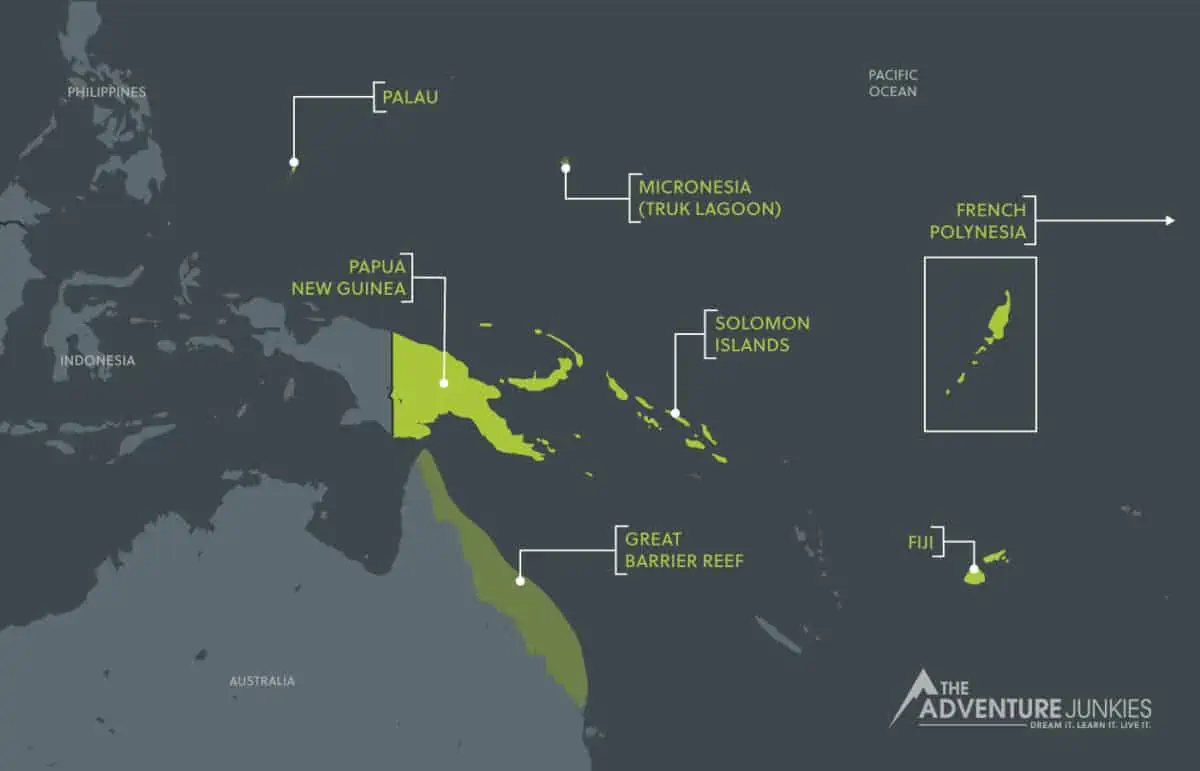Hundreds of tiny islands and sheltered coral lagoons dot the South Pacific Ocean, creating a hotbed for some of the world’s best diving. From majestic pelagics to colorful reef fish, this fascinating region will live up to your wildest expectations. As an added bonus, a South Pacific liveaboard can bring you to places where hardly anyone has ever ventured before.
Names such as Papua New Guinea conjure images of primitive tribes and uninhabited islands, while Fiji, Palau and the Solomon Islands represent the quintessential tropical paradise. You might not have known it, but this area was very active during World War II and places like Truk Lagoon and French Polynesia now hide hundreds of wrecks in their depths. And, of course, your scuba diving bucket list is not complete until you’ve dived Australia’s Great Barrier Reef!
For more of our liveaboard recommendations, check out these popular articles:
Caribbean | Bahamas | Belize | Cuba | Turks & Caicos
North Pacific | Galapagos | Guadalupe | Socorro | Cocos
South Pacific | Australia | Palau | Fiji | French Polynesia | PNG | Solomon Islands
South East Asia | Raja Ampat | Komodo | Similan | Tubbataha | Burma
Red Sea & Middle East | Egypt | Sudan | Oman | Djibouti
Indian Ocean | Maldives | Seychelles | Visayas | Truk Lagoon
WHY YOU’LL LOVE IT
WORLD WAR II WRECKS: The South Pacific was the site of more than one World War II battle, and the war left a plethora of wrecks in its wake that are crawling with marine life.
PELAGICS: Drift divers especially can get their adrenaline pumping with an array of pelagics in Australia, Fiji, French Polynesia and Palau.
REMOTE LOCATIONS: You’ll be one of the only divers at the Solomon Islands and Papua New Guinea, where the dive sites are pristine and untouched.
CORAL REEFS: The Great Barrier Reef is the most famous, but coral reefs in Fiji, the Solomon Islands and Papua New Guinea are also world-class.
MAP OF THE AREA
WHEN TO GO
JANUARY TO APRIL: This is diving season in Fiji and French Polynesia, with rainy weather and warm water which attract pelagics. It’s also the best time to dive Australia, although the country sees cyclones through April. Truk Lagoon and Palau have their dry season now, and it’s the best time to dive Palau. The Solomon Islands suffer monsoons with rain and wind, while Papua New Guinea’s rainy season is all year long.
MAY TO SEPTEMBER: Visibility in French Polynesia is at its best, although water is cold and choppy and there can be typhoons. Fiji enjoys good visibility and cool water from July onwards. This is the best time to see whales in Australia. The Solomon Islands are slightly cooler, as is Papua New Guinea, where it’s the best time to dive the Bismarck Sea. It’s rainy season in Palau and Truk Lagoon.
OCTOBER TO DECEMBER: This is the start of diving season in French Polynesia, Palau and Fiji. Australia sees cyclones during this time, while the Solomon Islands enjoy warm weather through June. Truk Lagoon continues to be rainy.
All these dive sites can be dived year-round. Water temperature varies little and usually ranges from 75 to 86° F (24 to 30° C).
DESTINATION 1: AUSTRALIA
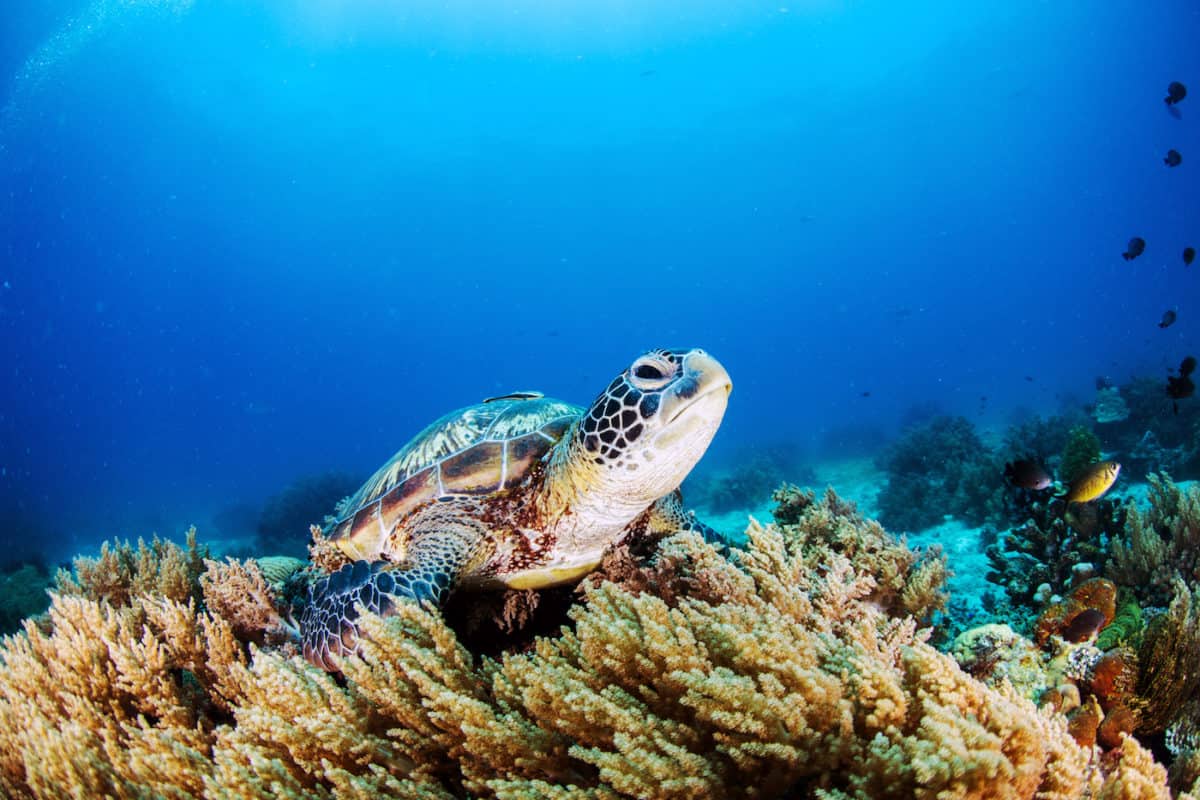
Photo by istockphoto.com/portfolio/davidevison
Australia is best known for its iconic Great Barrier Reef, which measures an astounding 1,240 miles (2,000 km) and can be seen from outer space. It’s the largest reef system in the world, with 2,900 individual reefs, 400 types of coral and over 1,500 species of fish. With an Australia liveaboard, you can see it for yourself in all its splendor.
Dugongs, porpoises, bumphead parrotfish, Maori wrasse, sharks and 30 species of whales and dolphins co-exist with smaller fish such as angelfish and clownfish. It’s a breeding ground for the threatened green turtle and the humpback whale, and the only place where you’ll see groups of minke whales. Beyond the reef you’ll find shipwrecks, ancient volcanoes, steep coral walls and depths up to 2000m. Sadly, the reef faces a serious threat from climate change.
QUICK STATS
WHERE YOU GO FROM: Cairns, Australia
PRICE RANGE: $500 – $2,500
DIFFICULTY: Beginner – advanced
LENGTH: 2 to 7 days
WATER TEMPERATURE: 75 to 86° F (24 to 30° C)
HIGHLIGHTS: Great Barrier Reef, planet’s largest living structure and one of the seven natural wonders of the world; most biodiversity of any UNESCO site
LIVEABOARD BOATS IN AUSTRALIA
Click here to see the best Australia liveaboard boats compared >>
SPOILSPORT
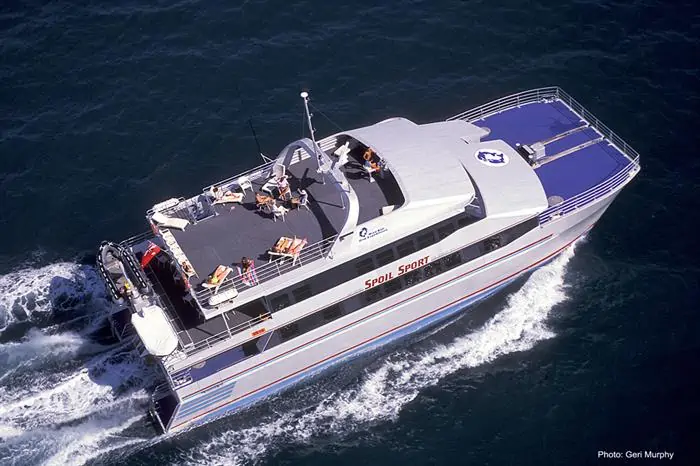
SPIRIT OF FREEDOM
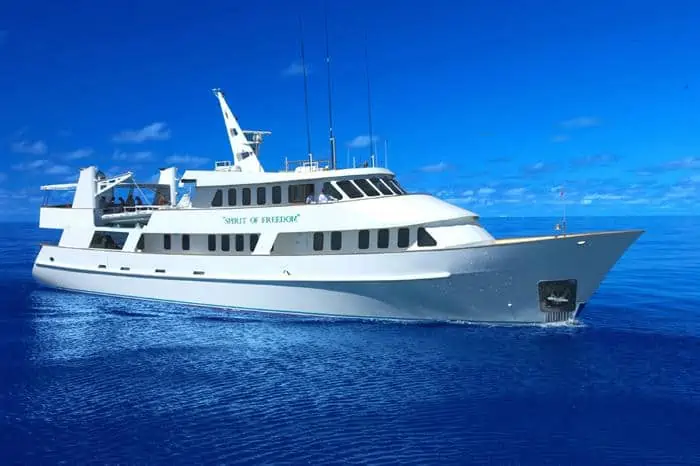
MV GREAT ESCAPE
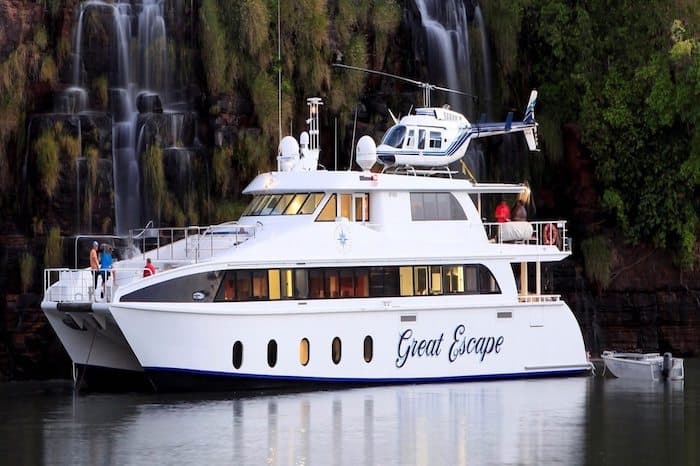
DESTINATION 2: FIJI ISLANDS
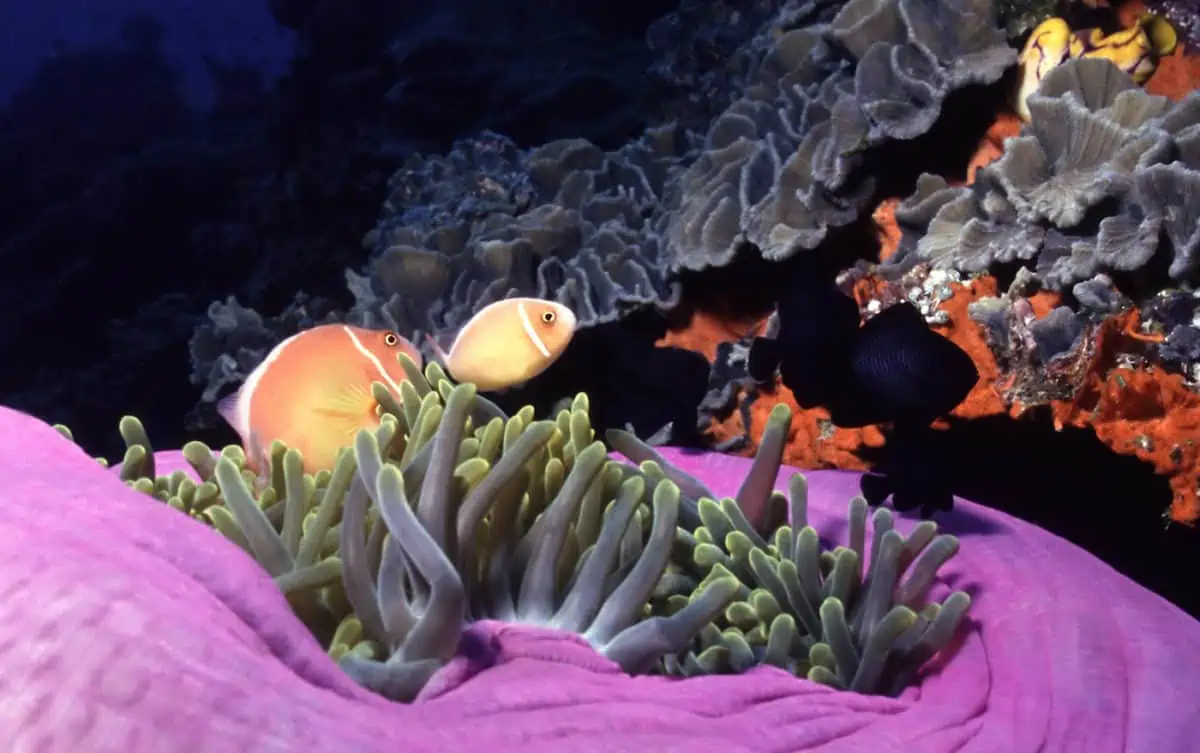
Photo by istockphoto.com/portfolio/dsabo
1,100 miles (1,700km) from the coast of New Zealand lies Fiji, a cluster of 332 volcanic islands with a variety of unique marine life hidden in its crystalline waters. Weird but beautiful sea creatures include blue ribbon eels, endemic twilight fangblennies, leaf scorpionfish and spawning bumphead parrotfish. The country’s colorful dive sites are best reached with a Fiji liveaboard.
Fiji is a dream scuba destination for any level of diver. The underwater landscapes feature coral beds and rocky pinnacles as well as steep walls with strong, nutrient-rich currents that bring lots of pelagics. Beginners can explore calm lagoons with soft corals and exquisite macro life, while more advanced divers will want to check out the drift diving for a glimpse of sharks, manta rays, wahoo and barracudas.
QUICK STATS
WHERE YOU GO FROM: Volivoli Beach Resort or Taveuni, Fiji
PRICE RANGE: $3,000 – $5,500
DIFFICULTY: Beginner – advanced
LENGTH: 8 to 11 days
WATER TEMPERATURE: 77 to 83° F (25 to 28° C)
HIGHLIGHTS: Soft coral capital of the world plus excellent pelagic diving with 7 species of turtles, 12 species of migrating whales and 9 species of sharks
LIVEABOARD BOATS IN FIJI ISLANDS
Click here to see the best Fiji liveaboard boats compared >>
NAI’A
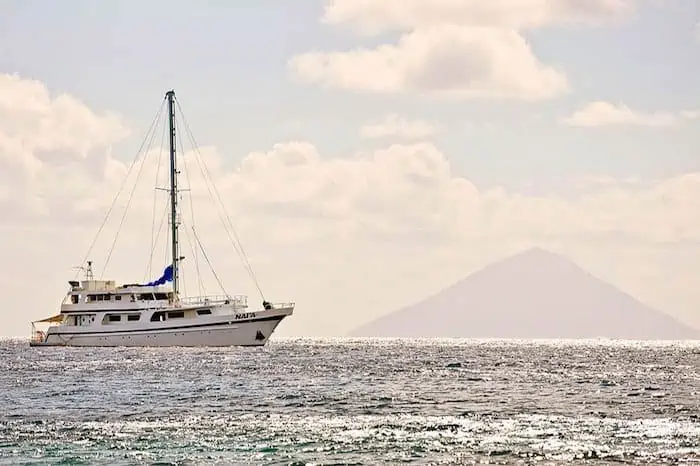
FIJI AGGRESSOR
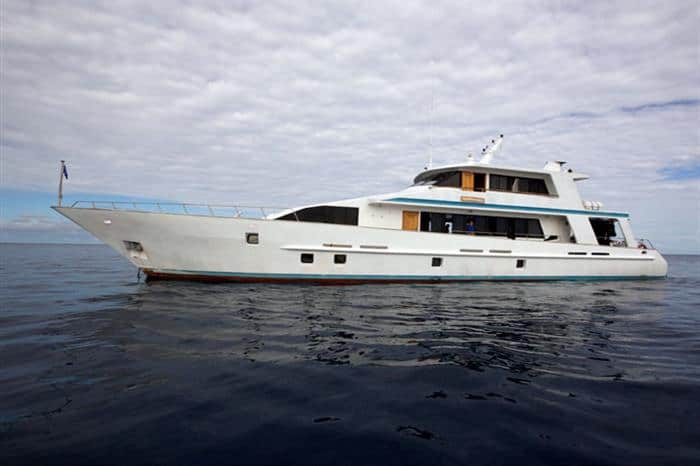
DESTINATION 3: FRENCH POLYNESIA
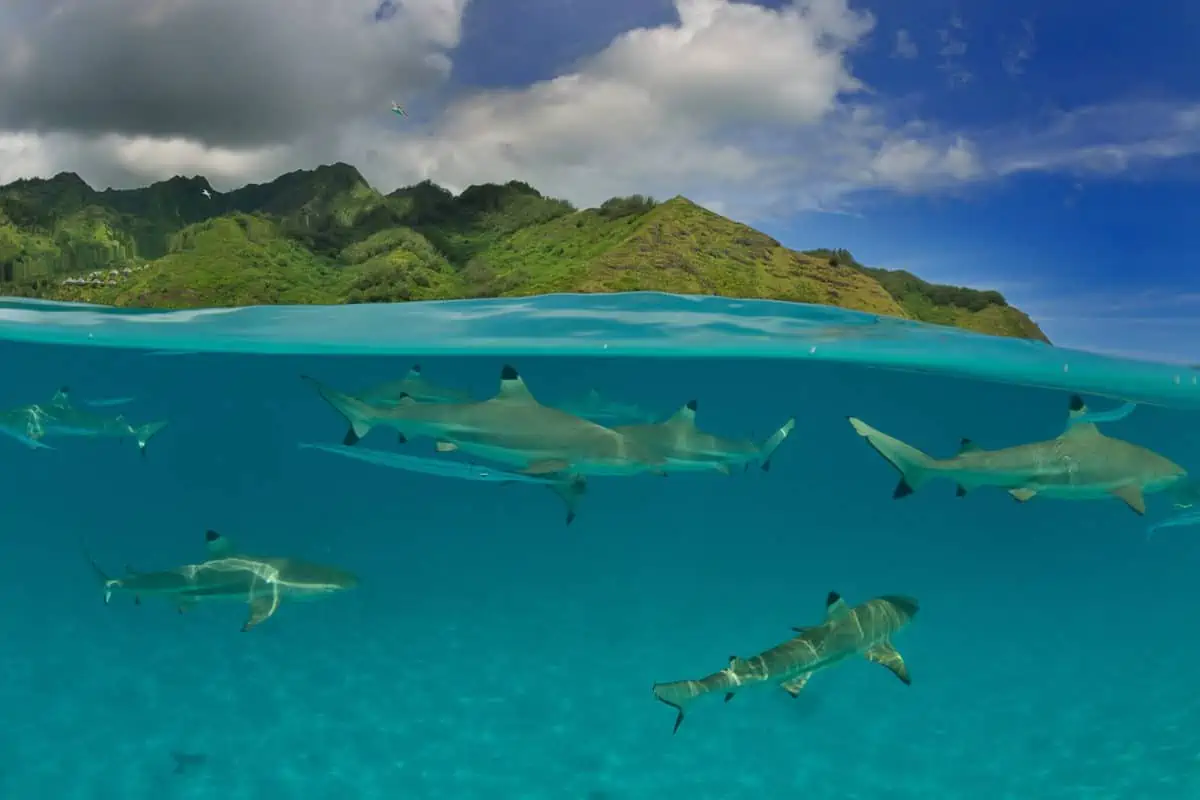
Photo by istockphoto.com/portfolio/bru_greg
French Polynesia consists of 100-odd islands located practically in the center of the South Pacific Ocean. The region has 1,250 square miles (2,000 square kilometers) of diverse underwater landscapes ranging from sheltered lagoons to rocky pinnacles and passes with heavy currents. A Fiji liveaboard is by far the best way to explore this idyllic diving paradise.
Best suited to advanced divers, French Polynesia offers the opportunity to go drift diving with schools of sharks and barracudas. The diving here is not limited to pelagics, however, and there are plenty of coral reefs where you’ll be able to see Napoleon wrasse, hawksbill turtles, pygmy seahorses and clownfish. Don’t miss the sunken World War II wrecks, and keep an eye out for manta rays along the sloping coral walls.
QUICK STATS
WHERE YOU GO FROM: Rangiroa or Fakarava, French Polynesia
PRICE RANGE: $4,000 – $6,000
DIFFICULTY: Advanced
LENGTH: 8 to 11 days
WATER TEMPERATURE: 79 to 84° F (26 to 29° C)
HIGHLIGHTS: Drift diving with pelagics
LIVEABOARD BOATS IN FRENCH POLYNESIA
Click here to see the best French Polynesia liveaboard boats compared >>
AQUA TIKI II
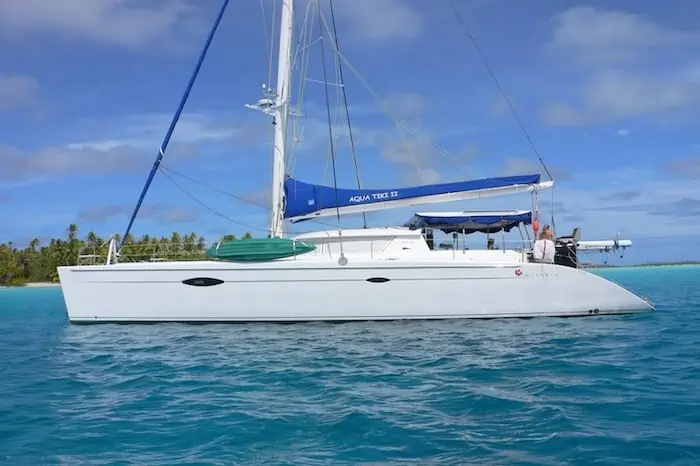
MASTER
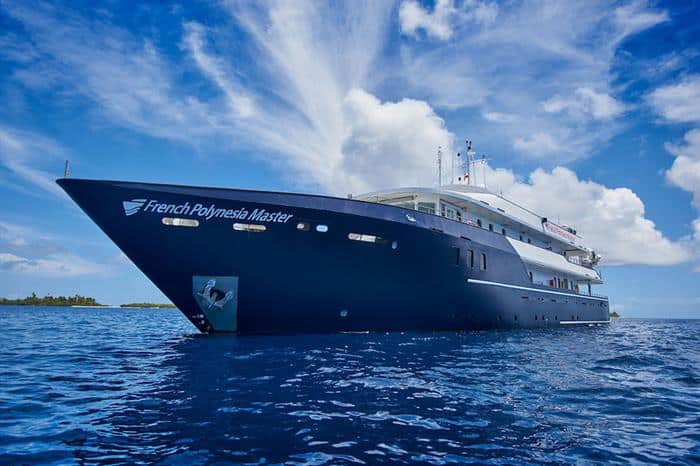
DESTINATION 4: PALAU
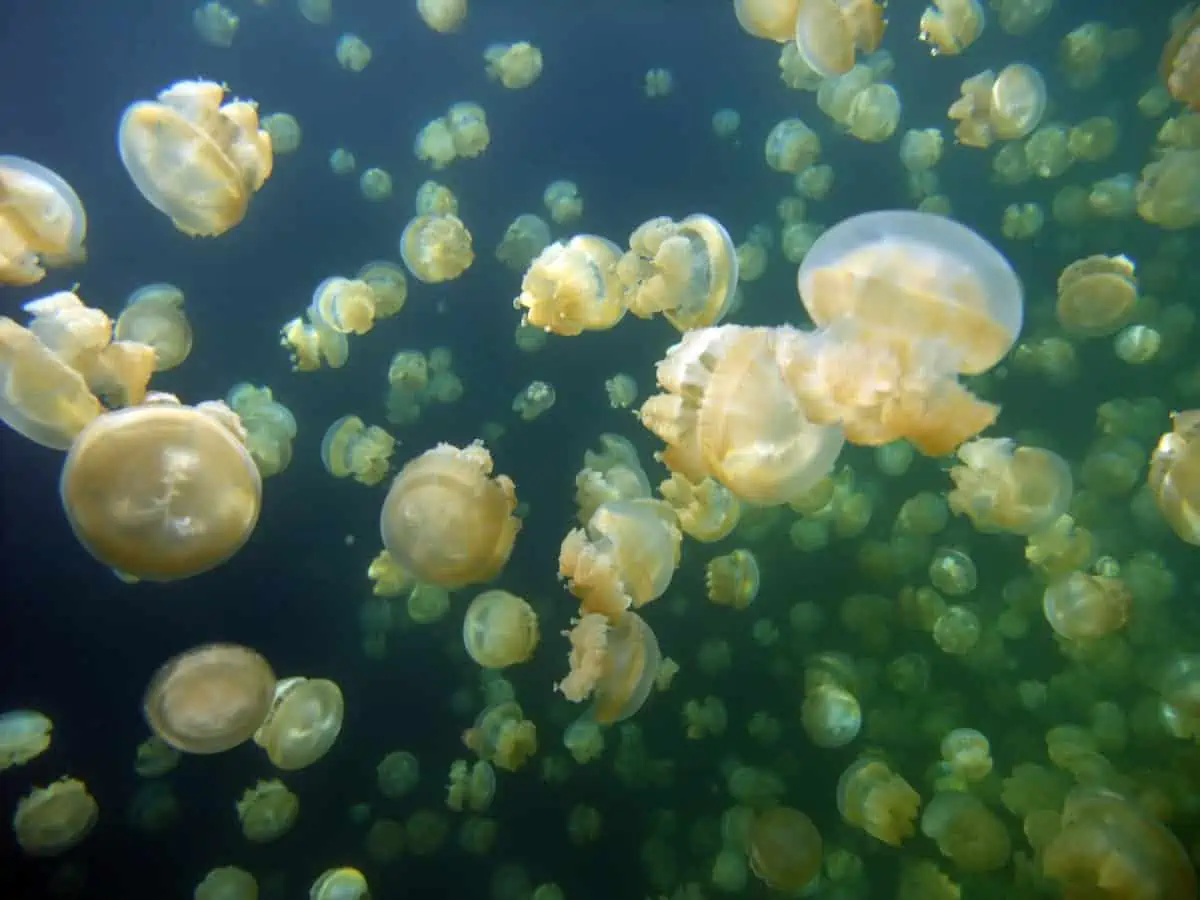
Photo by istockphoto.com/portfolio/pixelshredder
Palau is a secluded volcanic archipelago in Micronesia, protected from the ocean by a robust reef system. Coral atolls jut out from sheltered turquoise lagoons; below them, soft corals house a variety of macro life and schools of fish. Further out, strong ocean currents sweep in pelagics by the dozen. Only with a Palau liveaboard can you fully experience everything this amazing region has to offer.
Palau’s underwater geography boasts boulders, caverns, channels and breathtaking blue holes. Past steep drop-offs drift divers will find manta rays, sea turtles and sharks – in fact, this is the site of the world’s first shark sanctuary. Palau is also a mecca for wreck diving, with World War II wrecks of all shapes and sizes. Visibility here can stretch up to 200ft (60m).
QUICK STATS
WHERE YOU GO FROM: Malakal or Koror, Palau
PRICE RANGE: $3,000 – $5,000
DIFFICULTY: Beginner – advanced
LENGTH: 8 to 11 days
WATER TEMPERATURE: 81 to 86° F (27 to 30° C)
HIGHLIGHTS: Challenging drift dives through rocky underwater landscape with drop-offs, channels, caverns and blue holes
LIVEABOARD BOATS IN PALAU
Click here to see the best Palau liveaboard boats compared >>
PALAU SIREN
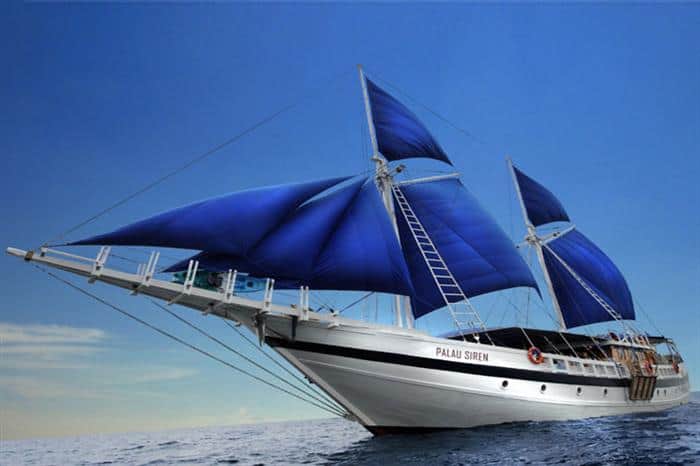
ROCK ISLAND AGGRESSOR
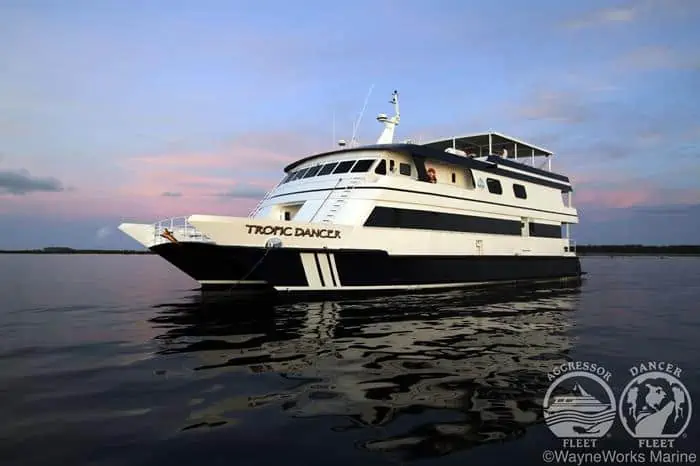
SOLITUDE ONE
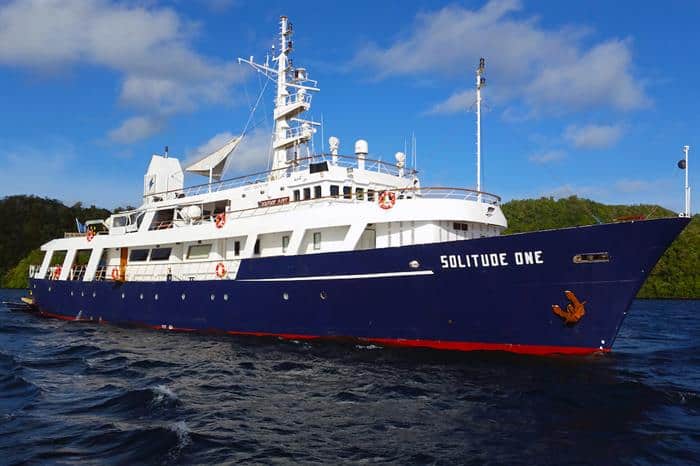
DESTINATION 5: SOLOMON ISLANDS
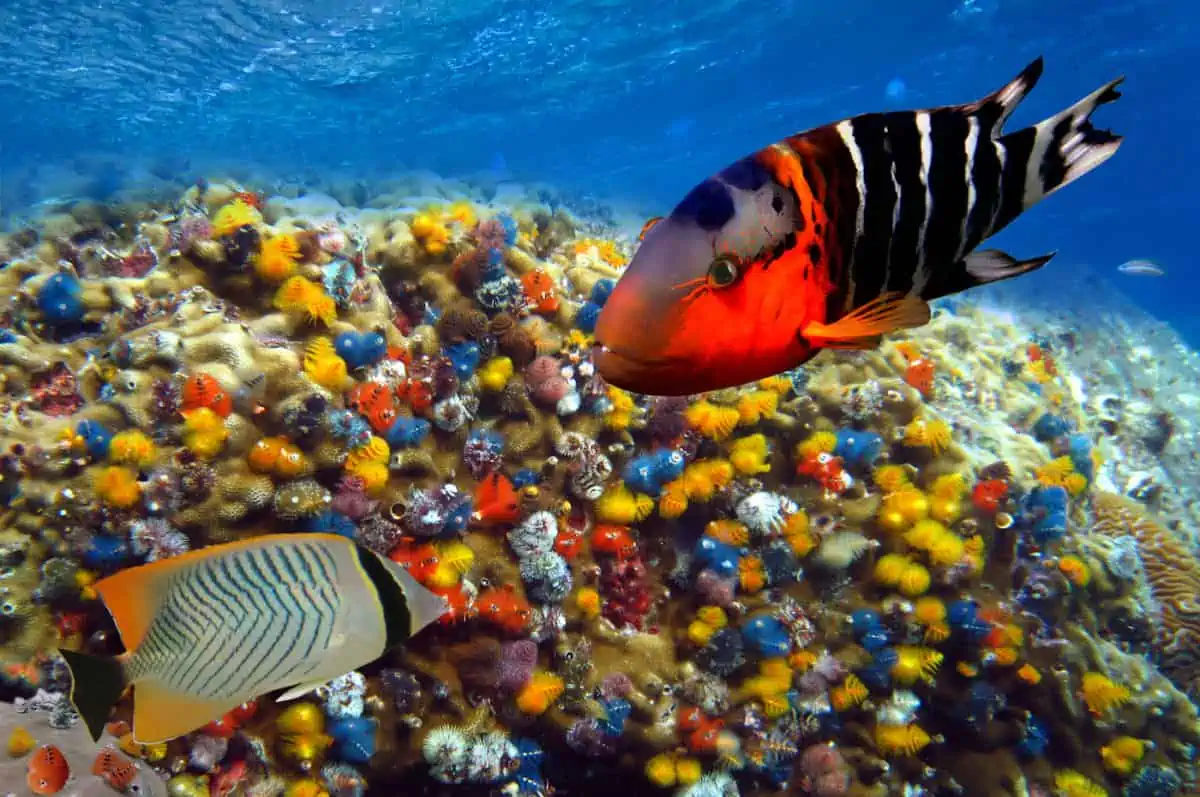
Photo by istockphoto.com/portfolio/vlad61
The Solomon Islands just east of Papua New Guinea offer spectacular diving at uncrowded dive sites. Over almost 1,000 islands formed over centuries by volcanoes and earthquakes have created an oasis that has remained virtually untouched due to the lack of tourists. A Solomon liveaboard is your ticket to world-class diving off the beaten track.
The country is famous for its historical World War II wrecks, which are teeming with nudibranchs and other macro life. You can also go muck diving to hunt for hidden critters, or swim with turtles, batfish and schools of barracudas, sharks and rays. Weave through one of the many caves and surface under the jungle canopy, or take an exhilarating dive with eels and pygmy seahorses in an underwater lava tube.
QUICK STATS
WHERE YOU GO FROM: Honiara, Solomon Islands
PRICE RANGE: $3,000 – $6,000
DIFFICULTY: Beginner
LENGTH: 8 to 12 days
WATER TEMPERATURE: 84 to 86° F (29 to 30° C)
HIGHLIGHTS: Unspoiled dive sites with healthy coral reefs
LIVEABOARD BOATS IN SOLOMON ISLANDS
Click here to see the best Solomon Islands liveaboard boats compared >>
SOLOMONS PNG MASTER
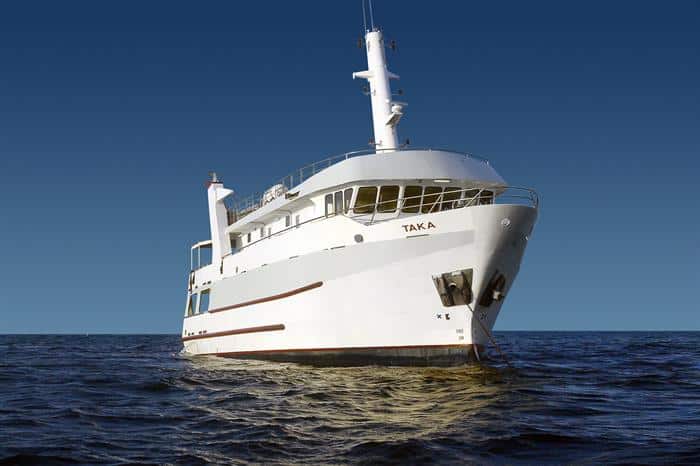
MV BILIKIKI
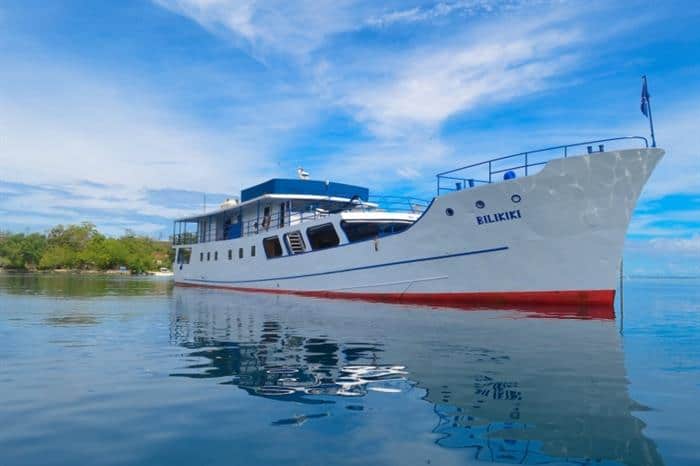
DESTINATION 6: PAPUA NEW GUINEA
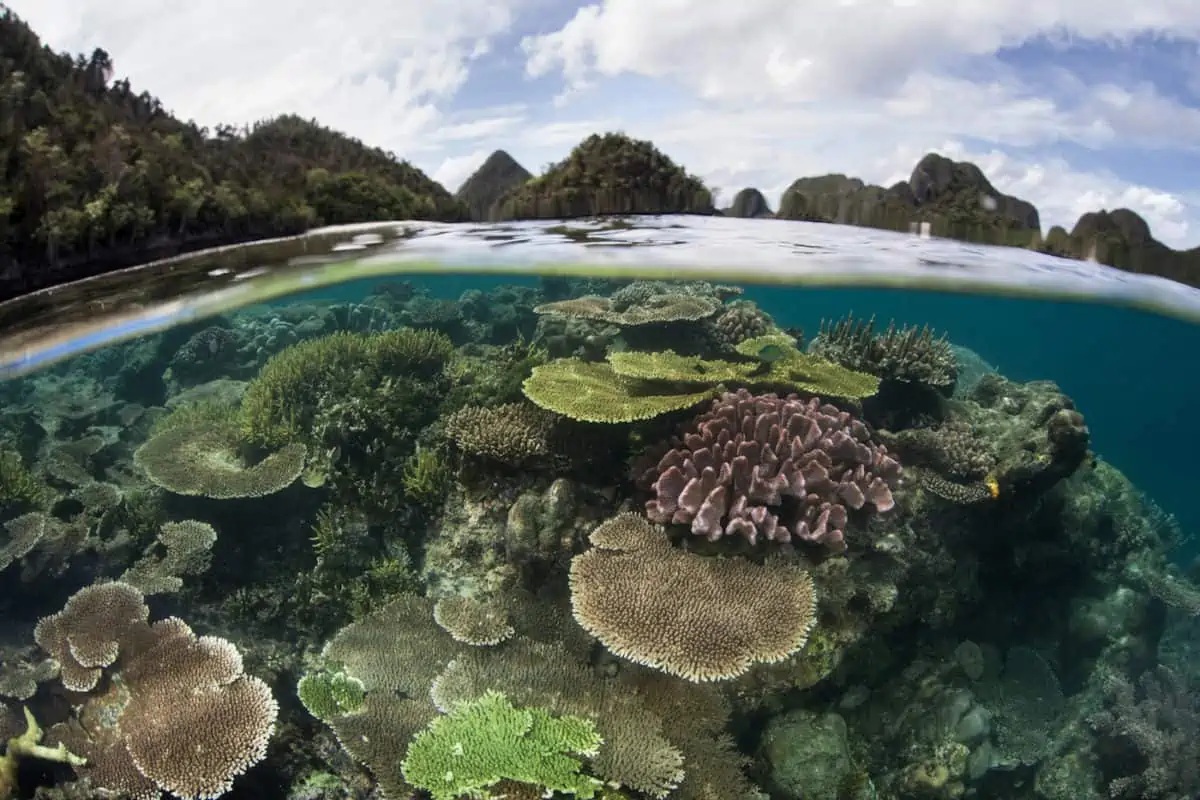
Photo by istockphoto.com/portfolio/velvetfish
The remote country of Papua New Guinea is one of the world’s most mysterious, where the traditional customs of ancient tribes have survived to this day. The secluded nature of the diving here means that the marine life is exceptionally well-preserved. With a Papua New Guinea liveaboard, divers will have the chance to explore areas that nobody has ever dived before!
The undisputed birthplace of muck diving, Papua New Guinea’s waters reveal pygmy seahorses, nudibranchs, mimic octopi, wobbegong sharks and rhinopias. Larger pelagics such as manta rays and hammerheads haunt the seamounts and underwater drop-offs, and wreck divers can investigate sunken airplanes from World War II. As part of the Coral Triangle, the region enjoys the highest marine biodiversity in the world.
QUICK STATS
WHERE YOU GO FROM: Alotau or Kimbe Bay, Papua New Guinea
PRICE RANGE: $3,000 – $4,500
DIFFICULTY: Beginner
LENGTH: 8 to 11 days
WATER TEMPERATURE: 82 to 86° F (28 to 30° C)
HIGHLIGHTS: Undiscovered dive sites in the Coral Triangle
LIVEABOARD BOATS IN PAPUA NEW GUINEA
Click here to see the best Papua New Guinea liveaboard boats compared >>
FEBRINA
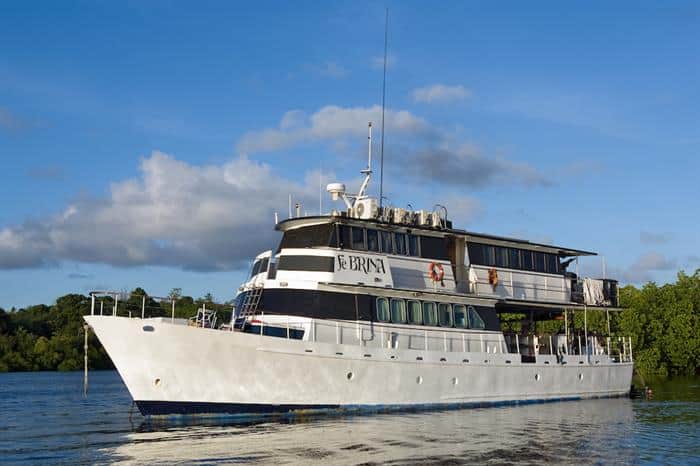
DESTINATION 7: MICRONESIA (TRUK LAGOON)
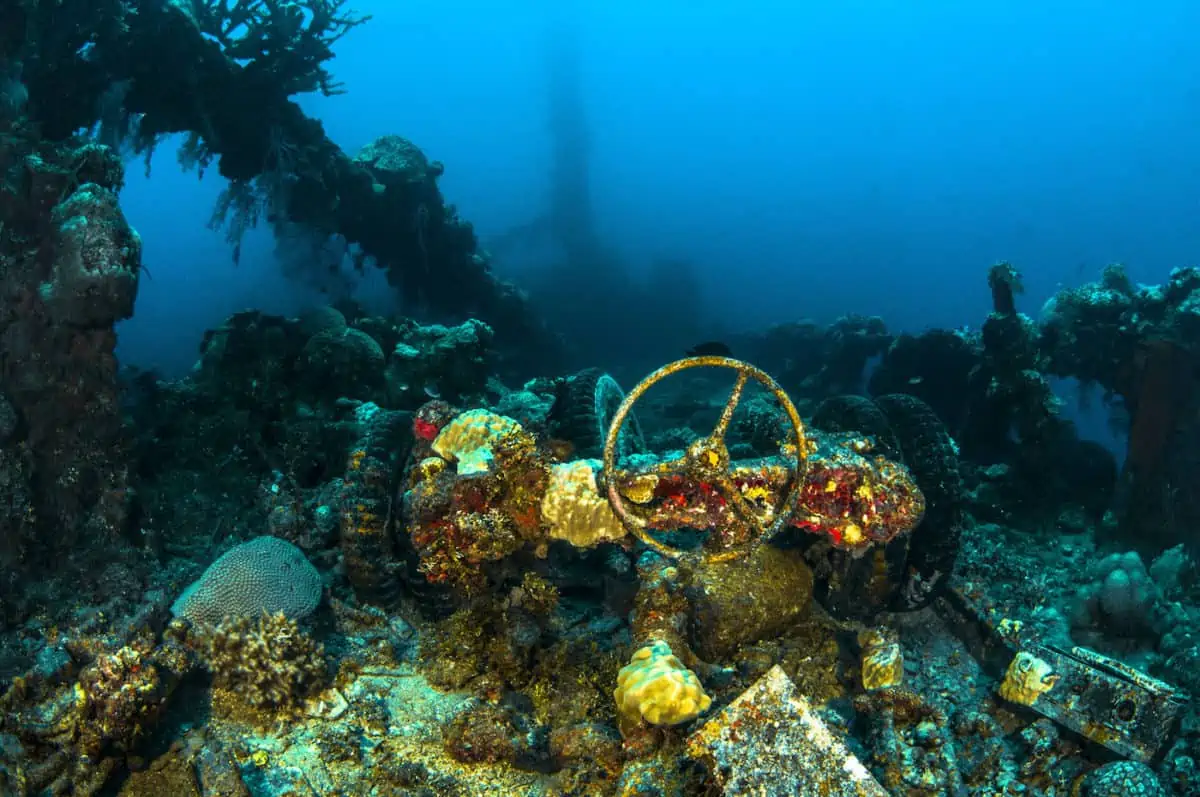
Photo by istockphoto.com/portfolio/atese
In February, 1944, the U.S. Navy launched Operation Hailstone, a devastating attack against the Japanese military base at Truk Lagoon in the Caroline Islands. Fast-forward half a century and Truk Lagoon has become one of the world’s premier sites for wreck diving. The best way to discover this underwater graveyard is with a Truk Lagoon liveaboard.
The sheltered coral lagoon is home to more than 60 wreck sites littered with warships and planes as well as medical supplies, ammunition, gas masks and the eerie remains of human skeletons. The debris has since been encrusted with coral and is inhabited by brightly colored fish and macro life. Many of the wrecks lie in shallow waters, but liveaboard operators recommend being certified for tech diving so you can explore the deeper wrecks.
QUICK STATS
WHERE YOU GO FROM: Weno, Micronesia
PRICE RANGE: $2,000 – $4,500
DIFFICULTY: advanced
LENGTH: 8 to 11 days
WATER TEMPERATURE: 81 to 86° F (27 to 30° C)
HIGHLIGHTS: Best World War II wreck diving in the world
LIVEABOARD BOATS IN MICRONESIA
Click here to see the best Truk Lagoon liveaboard boats compared >>
TRUK MASTER
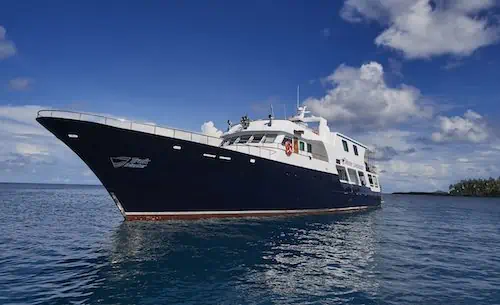
SS THORFIN
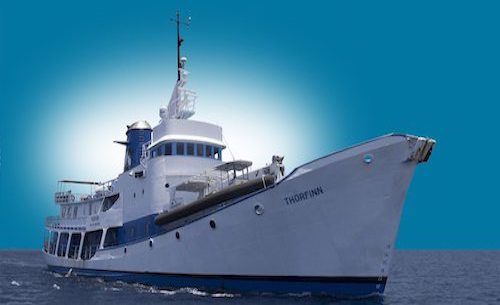
READ MORE
For more of our top scuba diving gear recommendations, check out these popular buyer's guides:

